FEATURES|COLUMNS|Exploring Chinese Buddhism
Sky Lanterns and Walubi: My Waisak Day at Borobudur in 2018, Part 1
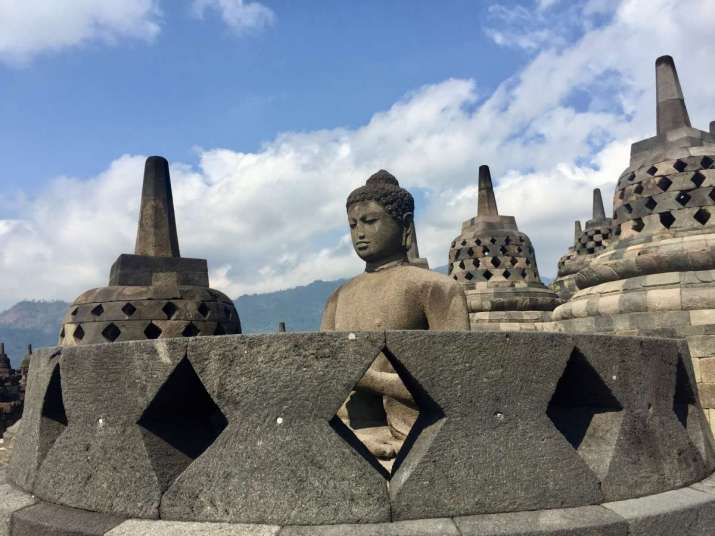 Buddha statue at Borobudur. Image courtesy of the author
Buddha statue at Borobudur. Image courtesy of the authorBorobudur has always enchanted me. Dated to the eighth and ninth centuries, during the Shailendra dynasty, it is the largest Buddhist monument in existence. Constructed out of 56,600 cubic meters of volcanic stone in the shape of a mandala, the site contains hundreds of Buddha statues and thousand panels of carved relief. We do not know exactly when Borobudur was abandoned after Islam arrived in Central Java in the 13th century, but it re-emerged in 1814 from layers of volcanic ash and jungle on the Kedu Plain. A timeless wonder created by mankind situated amid the wonder created by nature, in the name of Buddhism—who does not want to see Borobudur?
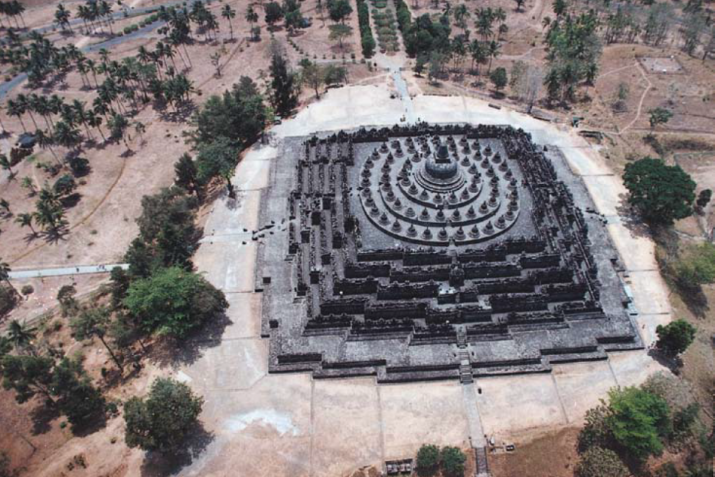 Aerial view of Borobudur. From unesco.org
Aerial view of Borobudur. From unesco.orgHowever, I never sat down to schedule a visit until one day in February I learned of the annual flying-lantern ceremony at Borobudur on the day of Vesak, or “Waisak” in Indonesian. Commemorating the birth, enlightenment, and Parinirvana of the historical Buddha, Vesak was formally established as a Buddhist festival in 1950, at the first conference of the World Fellowship of Buddhists in Sri Lanka. Since then, it has been observed across countries in South and Southeast Asia, albeit on different days according to different calendars. In Indonesia, Waisak fell on 29 May this year. Enthralled by photographs of previous celebrations at Borobudur, where countless glowing lanterns float around the step pyramid compound, I immediately sent out a call for travel companions among my friends. Sometimes, it is good to travel alone, but moments like this one wants to share.
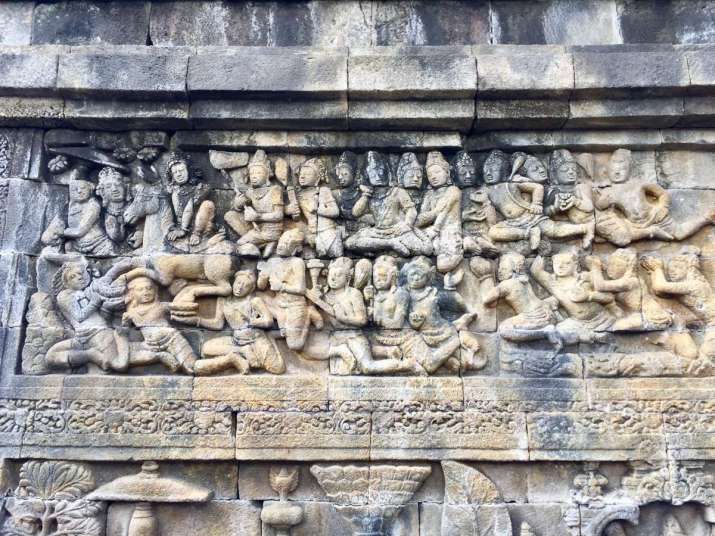 carved relief at Borobudur. Image courtesy of the author
carved relief at Borobudur. Image courtesy of the authorMany expressed a yearning to go, but they bailed out one after another for work or personal reasons. By the end of April, just one month before Waisak, I was almost convinced that the trip was not going to happen this year. Fortuitously, however, a friend who is gradually becoming interested in Buddhism suddenly confirmed that she could make it. We then started looking into the Waisak celebrations at Borobudur online, and it turned out that all instructions and programs we could find were in Indonesian! In the end, I gave in and decided to go with a local travel agent, which is rarely how I travel. Nevertheless, it turned out to be the right move, as participation in the ceremony requires advance booking. In fact, our agent helped some 200 international visitors join the ceremony this year.
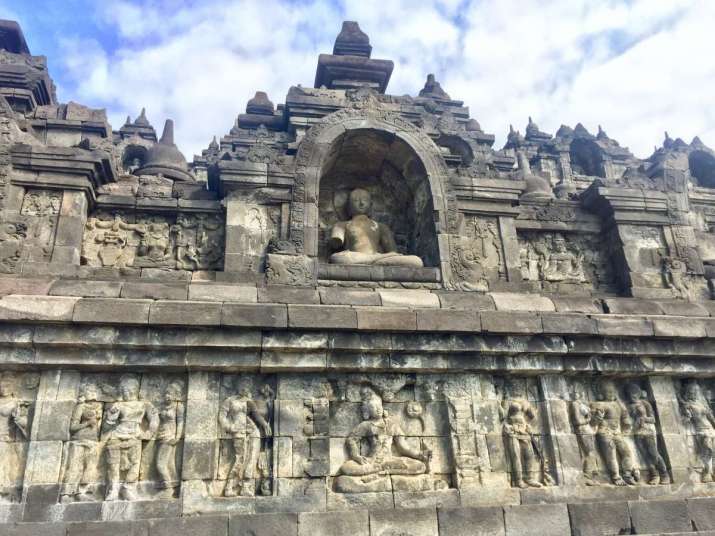 Statues and reliefs at Borobudur. Image courtesy of the author
Statues and reliefs at Borobudur. Image courtesy of the authorSome might think it is easy to travel around in Asia, just like in Europe, but it took us some 10 hours to fly from Shanghai to Yogyarkarta with a transit in Singapore. During our stay in Yogyakarta, we tried to do some tourist activities, but we were really just there for Borobudur. On 29 May, our travel agent picked us up at 6:30 am from our hotel and put us on a van with travelers from Jakarta, Hong Kong, Tokyo, New York, and San Francisco. Some of us were Buddhist, while most were not. We had a full-day program ahead of us: Borobudur in the morning, a procession from Mendut Temple back to Borobudur around noon, the state ceremony, and finally the flying-lantern ceremony at midnight. As we got to know one another, I could not help wondering what kind of karmic connections brought us together on this special day.
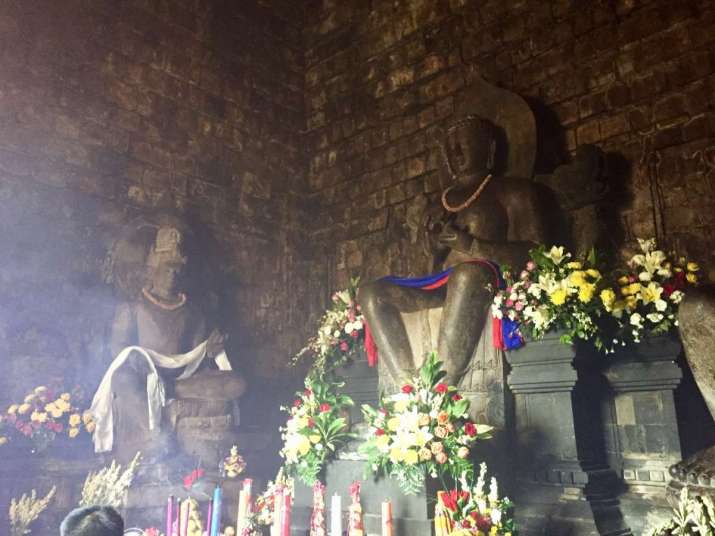 Buddha flanked by bodhisattvas at Mendut Temple. Image courtesy of the author
Buddha flanked by bodhisattvas at Mendut Temple. Image courtesy of the authorHowever, one would be mistaken to think that this event only caters to tourists. It is clearly of national importance. Before we could visit Borobudur, our guide Jamal, a Muslim and in his 50s, informed us that Indonesian president Joko Widodo was visiting the site. When we reached Mendut Temple, thousands of devotees had already set up tents at the site and arranged their lunchboxes. For them, Waisak had started a few days earlier, with various worship programs taking place at the temple since 26 May. When we arrived, they were anticipating the two-hour procession to Borobudur following the sangha assembly consisting of Theravada and Mahayana masters. To mark their unified presence, many of the devotees wore black vests with “WALUBI” written on the back, the abbreviation for Perwakilan Umat Buddha Indonesia (Representatives of the Indonesian Buddhist Community). Later, the chairperson of WALUBI, Hartati Tjakra Murdaya (Zou Liying), a successful businesswoman of Chinese ethnicity, gave a speech at the state ceremony. The final speech was by Lukman Hakim Saifuddin, minister of religious affairs, witnessed by political and religious leaders.
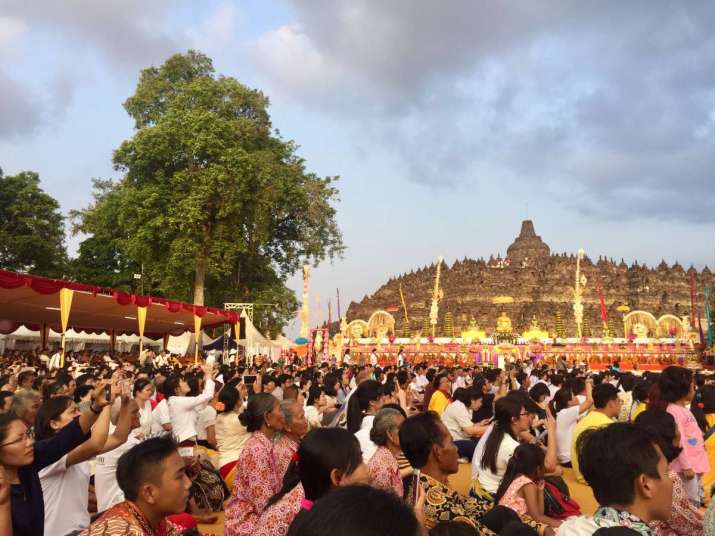 State Waisak Ceremony at Borobudur. Image courtesy of the author
State Waisak Ceremony at Borobudur. Image courtesy of the authorTo be continued . . .
Related features from Buddhistdoor Global
Sky Lanterns and Walubi: My Waisak Day at Borobudur in 2018, Part 2
The Resistance: Indonesian Women Moving Against Religious Intolerance
Reviving the Bhikkhuni Sangha in Indonesia: an Interview with Ayya Santini
Decapitated Buddhas At Borobudur
Related news from Buddhistdoor Global
Indonesia Bans Myanmar Protests at Borobudur Buddhist Temple
Indonesia Aims to Boost Spiritual Tourism at Borobudur Buddhist Temple
Daughters of Buddhism in Thailand Find Growing Acceptance in the Face of Official Disapproval
Borobudur to Become an International Destination for Buddhist Pilgrims














